Born in 1963, Francois Azambourg studied
at the École Régionale des Beaux-
Arts de Caen before joining the École
Nationale Supérieure des Arts Appliqués
et des Métiers d’Art (ENSAAMA). He then
founded his own design studio in Paris
and has since collaborated with the Centre
International d’Art Verrier (CIAV), as well
as Hermès, Ligne Roset, the Manufacture
de Sèvres, Louis Vuitton, Cappellini,
Poltrona Frau, and the Galerie kreo. He has
won several important awards throughout
his career and was a Musée des Arts
Décoratifs laureate in 1985, as well
as a laureate of the Fondation de France
in 1988, the Fondation de la Vocation in
1993, the Villa Medicis Hors les Murs in
2003, the Grand Prix du Design de la Ville
de Paris in 2004, and the Villa Kujoyama
in 2015.
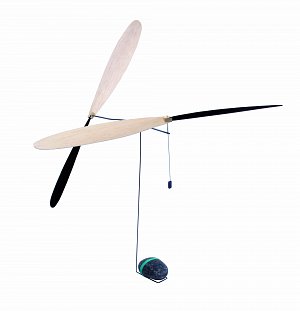
François Azambourg, Helical mobile, 2012
L’Atelier d’exercices edition. Samba, piano string, aluminum, latex elastic, granite pebble, lead, heatshrinkable sheath
© Studio L’Atelier du Vin
Azambourg’s works are held
in prestigious public collections as well,
including the Centre Pompidou, the
Musée des Arts Décoratifs, and CNAP.
In addition to his artistic recognition,
Azambourg maintains close ties with
the Musée des Arts Décoratifs, which
has acquired several of his emblematic
works in recent years, such as the Split
Wood chair in 2015, after his return from
a residency at the Villa Kujoyama, as well
as blown molded glass vases from his
Douglas series.
Azambourg’s prolific work radiates across
all fields of design.
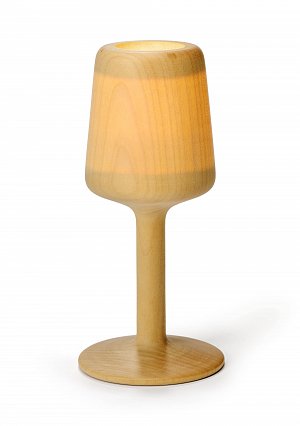
François Azambourg, Inga Lamp, 1999 (creation)
Turned Sycomore, LED light source
© Les Arts Décoratifs / Photo: Christophe Dellière
In every project,
he works with a sincere approach while
questioning and challenging the norm.
His design offers a new perspective
beyond the work itself, making the
structure of the object visible. Azambourg
provides absolute transparency, he does
not hide anything. Everything is said.
Everything is shown.
The show traces back to the very essence
of his work, starting from the origins of his
approach to the design industry, including
artistic expression, craftsmanship, living
experience and the notion of context
as a source of inspiration.
The world of childhood and imagination
are an introduction to the show. The visitor
discovers, through the designer’s first
creations, his attraction to airplanes, birds,
the world of the living, and technique.
He is already developing, without
knowing it, a methodology of creation
and a relationship with material that
involves exploration and manipulation.
He reads, researches, reproduces,
builds models, and dissects mechanical
systems. He is interested in the resistance
of materials, triangulation, notions that
he does not yet understand but that
already fascinate him. In this section,
the exhibition displays sketches,
drawings, models, and documents
revealed as testimonies of the worlds
he builds as a child. The exhibition
revisits another of his passions, music,
which is omnipresent. It is in celebration
of music that he devotes, as early as 1985,
one of his first creations: a lightened
saxophone. Thanks to a new mouthpiece,
an original truss mechanism inspired
by the world of aviation, he revolutionizes
the ergonomics of the instrument and thus
the mobility of the musician.
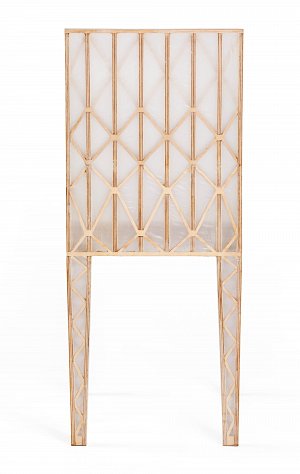
François Azambourg, Second prototype research chair Very Nice silk version 2003 (creation), 2022 (model)
Birch plywood structure 9 mm, water jet cut and glued, spruce and balsa reinforcement, cellulosic varnish, silk lining
© Les Arts Décoratifs / Photo: Charlaine Croguennec / Hom project
The exhibition also brings to light the
designer’s unique, unprecedented
experiments and techniques: lightweight,
triangular structures and flexible
“sandwiches”. Iconic pieces of furniture
such as the Very Nice chair (2003)
in Balsa, which only weighs 700 grams,
are exhibited. The material here is shaped
like the architecture of an airplane wing,
based on triangular structures, then
covered with polyester film.
The show also reveals, in a separate
project, Azambourg’s work on the
association and combination of materials.
Chairs, tables, armchairs, but also luggage
for Hermès, are made from what the
designer calls a “soft sandwich”. The latter
combines soft foam clamped between
two wooden or leather elements, that
reveal the smooth quality of the furniture.
From the prototype to the failed attempts,
the entire creative process is unveiled
here, reaching only eventually its final
result. It often leads to what Azambourg
calls in French “loupés” or “ratés”, in other
words unsuccessful experiments, which
ultimately become a source of inspiration
that guide him to work the material further
and to reveal its lightness.
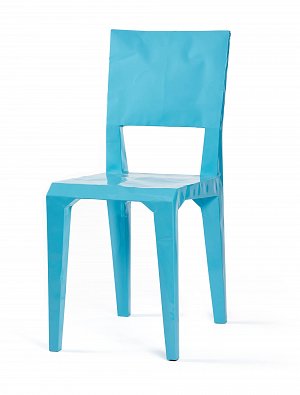
François Azambourg, La Chaise de Monsieur Bugatti, Blue version, 2006
Prototype 4/10 mm laminated steel sheet, wrinkled and selfwelded, two-component PU foam filling, varnished lacquer
© Les Arts Décoratifs / Photo: Charlaine Croguennec / Hom project
François Azambourg never stops
questioning the flexibility of the industry.
Produced without molds or in hollow
structures, his creations emancipate
themselves from traditional techniques
such as the Pack textile chair (1998),
inflated with polyurethane foam. Design,
as a space for reflection, allows him
to explore the world and develop new
fields of action. Craft becomes, according
to him, a laboratory for the industrial
world. In 2006, Azambourg used sheet
metal and imagined a new pattern, this
time made of metal, which he inflated with
foam. Over-expanded, the foam invaded
the entire inside void, causing the welds
to crack and the steel to wrinkle. Thus, the
Bugatti chair, also born from a “loupé”, will
be adopted in all the colors of the major
Italian racing car brands.
Wrinkling and folding, the designer
delights in constraining the materials
at hand. As in the vein of Serge Mouille
and his metal forms, Azambourg designed
seats made of mesh in 2008. Much like
origami, by choosing to work with mesh
through folding, he reinvented its plastic
expression.
The next galleries highlight the
relationship that François Azambourg
builds with the site in which he works. This
is precisely the case when he creates the
Douglas vase with the Centre International
d’Art Verrier de Meisenthal located
in the Vosges. Blown into a mold made
of Douglas wood, the vase takes on the
markings of its grain, expressing the very
imprint of the surrounding nature.
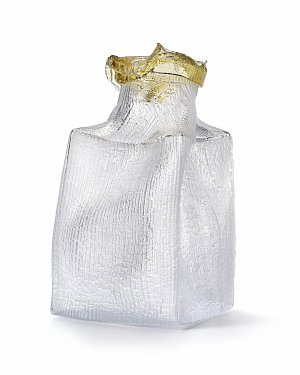
François Azambourg, Douglas 153 Vase, 2020
Edition from CIAV (International Center for Glass Art, Meisenthal). Blown and molded glass. Paris, Musée des Arts Décoratifs. Purchase thanks to the patronage of the Friends des Arts Décoratifs and Olivier Gabet, 2020
© Les Arts Décoratifs / Photo: Christophe Dellière
The vases are similar but all unique,
bearing the trace of the living and the
spirit of a place. When, in 2015, he flew
to Japan and settled in residence at the
Villa Kujoyama, he seized the same
spirit of the place and, as in Meisenthal,
sought to probe the language of wood.
He was interested in manufacturing
scraps, especially wood chips, which
became his favorite material. Through
weaving, braiding, and gluing, Azambourg
composed objects of absolute lightness
and his creations led him to a new
reflection on wood: split wood.
The exhibition ends with the close
ties he maintains with the world of the
living, an infinite source of inspiration.
He observes the lives of termites and
bees as well as those of machines.
He is a pioneer in this field when he
uses the potential of the beehive (2005)
as early as the 2000s. The Musée des
Arts Décoratifs, which preserves one
of the richest and oldest collections
of design in France, is happy to present
to the public this important monograph
dedicated to François Azambourg.